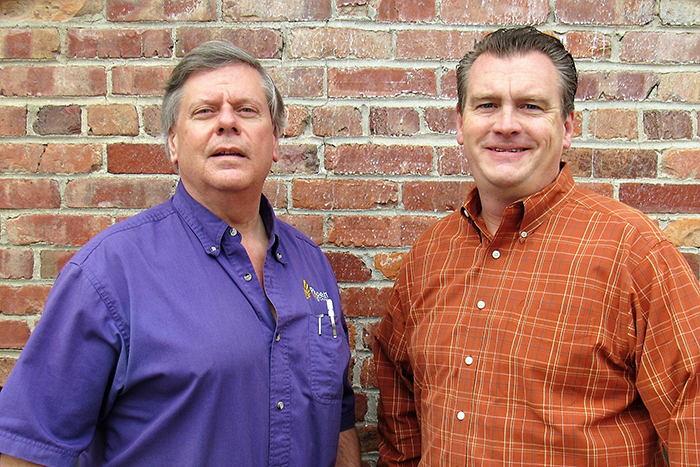
The Internet of Things (IoT) permeates all types of industries, including agriculture. Sensors collect data on everything from soil moisture levels to irrigation pump performance to water levels in wells and stock tanks. Making that data actionable requires either a visual inspection or a wireless transmission over a costly – and sometimes spotty – cellular network. Waverly, Nebraska startup SmallData Tech (SDT) has set its sights on a more reliable, much less costly approach using a packet radio transmission network.
“We’re able to do all this stuff without spending exorbitant amounts of money just for internet access,” said CEO Neil Johnson. “We use our own packet radio backbone.”
SDT’s technology has the potential for a wide range of applications and locations. In the near term, the company’s focus is AgTech in areas with limited internet service options, primarily Nebraska and western Kansas for the 2018 growing season.
“We’re focused on areas without direct internet access, where wifi isn’t strong enough, where a cell signal isn’t strong or is cost-prohibitive,” said COO Matt Bergmeyer. “This becomes a solution that works. We’re about small data, not pushing Netflix videos.”
The SDT solution incorporates an international specification called LoRaWAN that provides a standard for wireless, battery-operated things. LoRaWAN transmits small amounts of data farther than wifi, and much less expensively than cellular. It is currently used extensively in Europe and somewhat in the eastern U.S.
“Before long, LoRaWAN will be everywhere,” Johnson said. “But no one will compete in flyover states because of the lack of density.”
SDT is working both with public agencies and private companies to deploy their solution, which includes the “things” as well as the network.
“Everything we’re doing is stuff we’ve developed in-house, electronics, antennas, meter hats,” Johnson said. “The reason we’ve done this in the first place is that in the U.S. there’s not stuff that does this. Other people will eventually make the hardware, but we don’t care because we want to do the network.”
One example of the hardware SDT has developed is an audio analyzer for irrigation pumps.
“The audio analyzer listens to the pump, whether it’s on or off, listens to the electronic signature for changes that mean something might be going bad, and transmits the data,” Bergmeyer said. “Right now you might have to drive ten miles to check it. Basically, anything that needs a toddler to look at it, this saves a trip.”
Antennas placed at the edge of fields or at wellheads have a range of up to ten miles, operate on rechargeable batteries hooked to a solar panel and don’t require line-of-sight. They pick up and transmit signals from any device within range. Johnson was asked how he knows which signals come from which devices.
“Generally speaking, we get a list of devices from a particular entity, and as those devices show up, we know where they are and register them on the network,” he said. “We ignore packets that we don’t know who they are.”
Data is transmitted through a multi-hop, packet radio network until it is ultimately connected to an internet service provider and sent to SDT headquarters. From there, the data is packaged and sent to the user through an API.
“We push it out through a web API to whatever device they’re using,” Johnson said. “It doesn’t matter.”
Pressure to streamline crop and livestock production, as well as water use regulations, make it increasingly critical to have timely and reliable data.
“Water needs change depending on where a crop is in the growing process,” Bergmeyer said. “And if there’s an irrigation well across the street from a housing development, you don’t want to crank up your pivot and have twenty neighbors pumping sand.”
Most of the applications SDT supports involve grain production, but there is utility for the livestock industry as well.
“We’re automating the daily logs you have to do for livestock production,” Bergmeyer said. “It becomes particularly onerous when the end market comes in to do an audit. With this app, you push a button and data is compiled on things like when you checked the fence line or how you disposed of a dead carcass.”
SDT has put together info packets and slide decks, and a website is under development. The technical team is drawn from Phoenix Web Group (PWG), a software development company Johnson has operated for many years. PWG has been working on similar projects in the past.
“We’ve been working down this road for the last nine years,” he said. “We’ve gone incognito until recently.”
––
Rod Armstrong is Vice President of Strategic Partnerships for AIM in Lincoln, Nebraska. He is a regular contributor to Silicon Prairie News.




